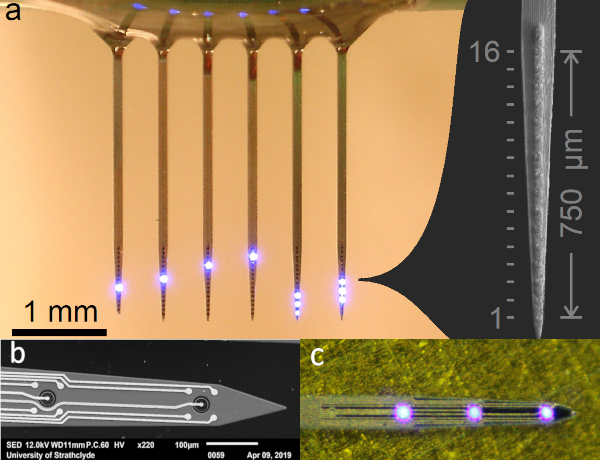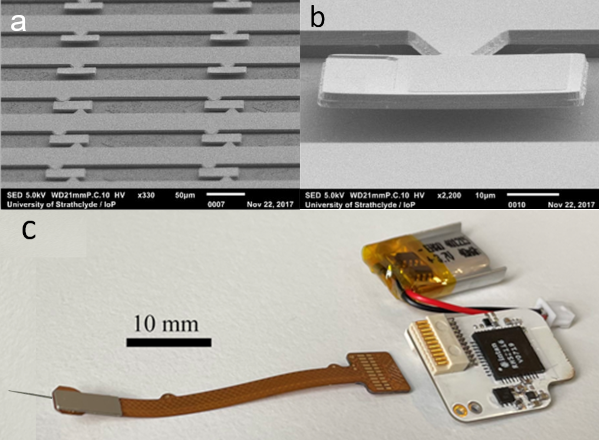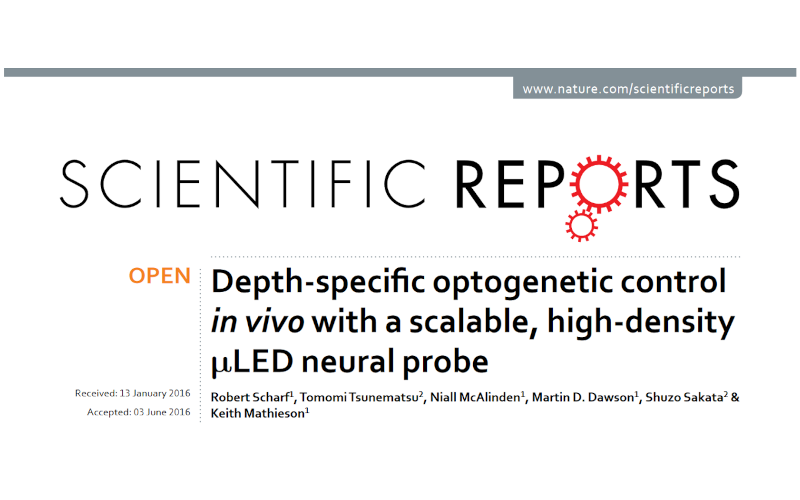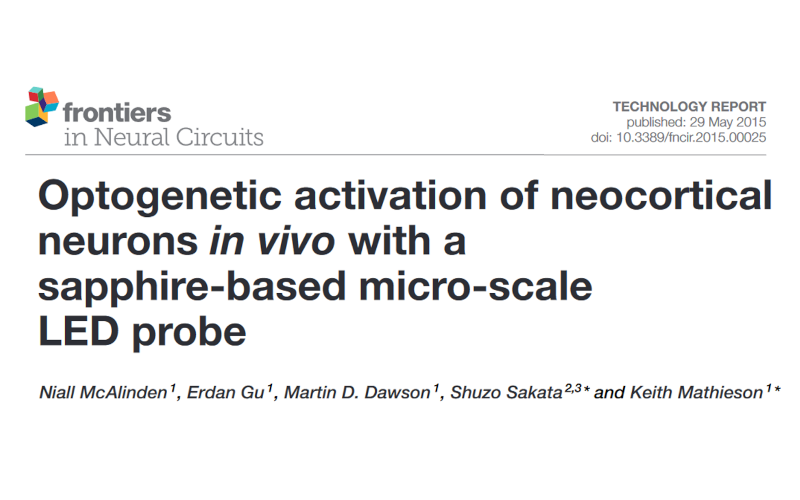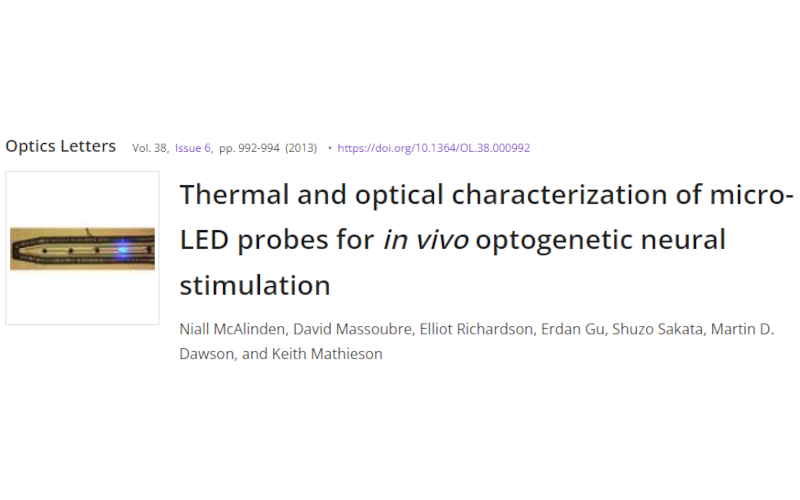Optoelectronic Neural Probes
Optogenetics has been a transformational technique that allows specific populations of neurons in the brain to be controlled through light, with millisecond temporal resolution. This combination of genetics and photonics has allowed precise studies into neural circuit function in awake behaving animals. Here, we are developing the optoelectronic technologies and techniques that allow neuroscientists to examine the functional properties of genetically targeted populations of cells. These are needle-like probes with integrated µLED devices (for optogenetic control) and µ-electrodes for monitoring action potentials and local field potentials. This combination of control and readout of neural circuit activity is used by our collaborator Dr. Shuzo Sakata to examine brain states at the level of neural circuits.
The IoP has been an international leader on the development of µLED technology, through Prof. Martin Dawson’s research. The Neurophotonics team continues to develop new optoelectronic devices for the control of novel opsins in vivo.
The EU-funded DEEPER project is a good example of this: here, we are working as part of a large consortium to develop new optical technologies and novel optogenetic constructs to study deep brain regions associated with disease states.
